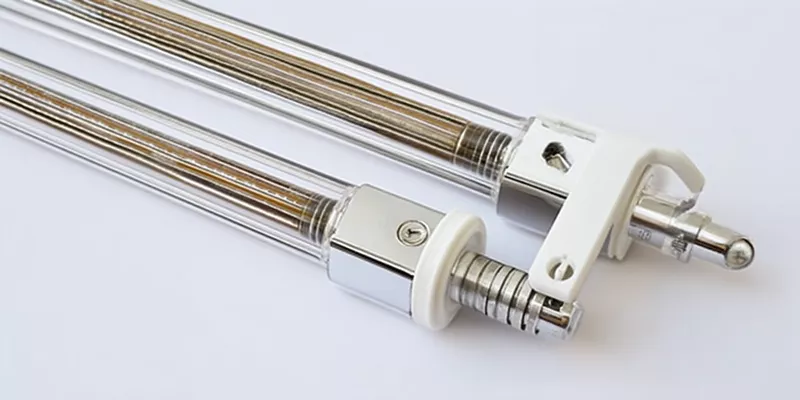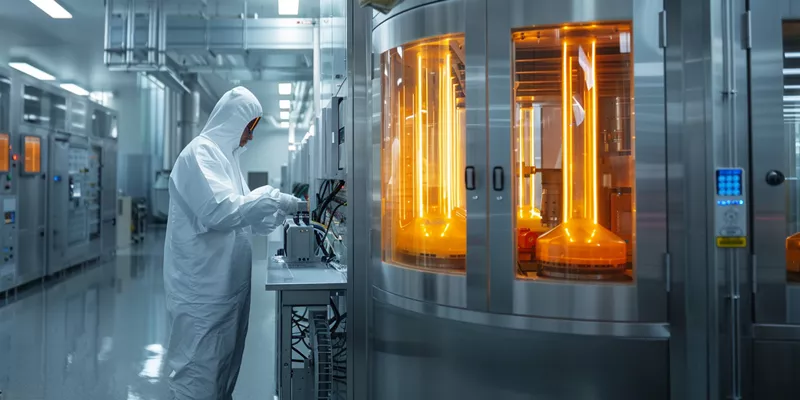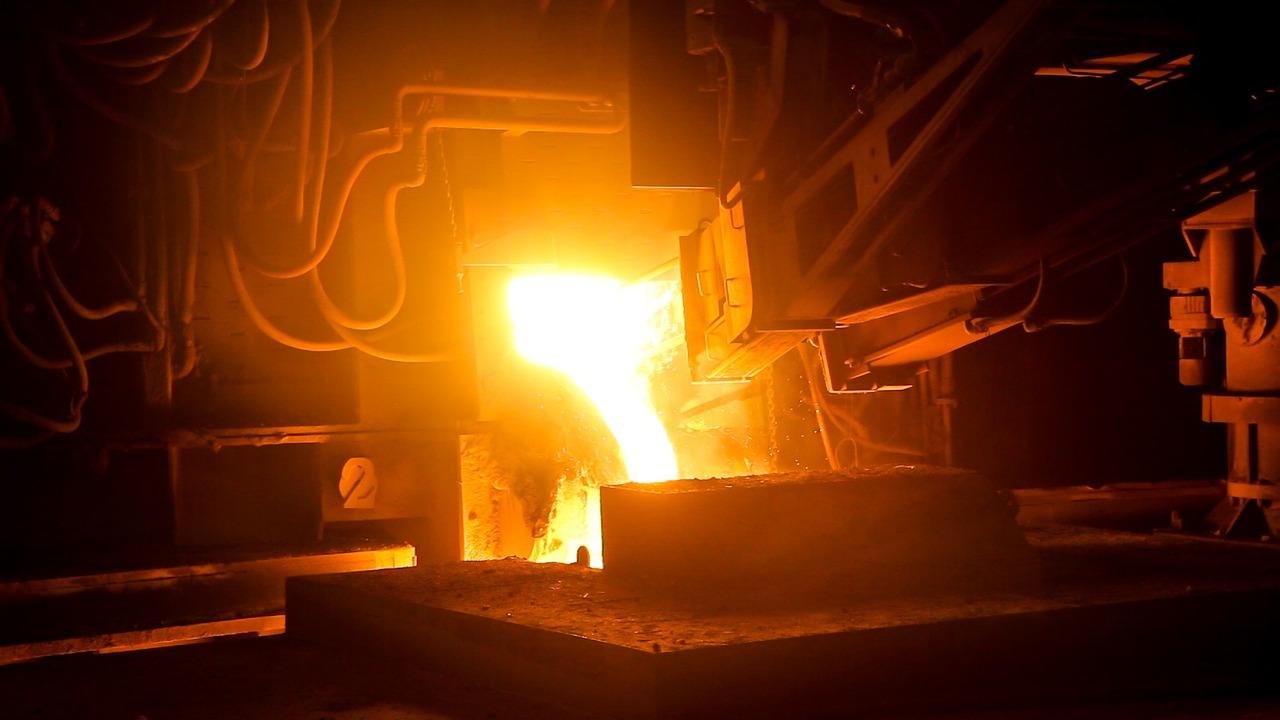Engineers and technical buyers are increasingly challenged to optimize heat management and structural reliability in advanced systems.
Square quartz tubes deliver up to 40% more heat dissipation surface than round tubes, but their unique geometry introduces new design and maintenance considerations. Understanding these trade-offs is essential for high-performance applications in 2025.

This guide provides a technical roadmap for selecting, specifying, and implementing square quartz tubes, covering geometry, performance, fabrication, and procurement.
Fundamental Properties of Square Quartz Tubes
Square quartz tubes are engineered for applications where flat surfaces, precise alignment, and enhanced heat transfer are required.
Their geometry impacts optical, thermal, and mechanical performance, making them distinct from traditional round tubes.
Geometric Advantages for Optical Alignment Stability
Flat faces of square tubes enable stable optical alignment in laser and photonic systems. This reduces the risk of misalignment during installation or operation.
The geometry also supports integration with planar components and fixtures. Engineers can achieve higher repeatability in optical setups.
However, sharp corners require careful handling to avoid chipping and stress concentration.
Thermal Stress Distribution at 90° Corners (2.3x Concentration)
Thermal stress is concentrated at the 90° corners of square tubes, with studies showing up to 2.3 times higher stress than in curved surfaces.
This increases the risk of cracking during rapid temperature changes. Engineers should limit ramp rates and consider corner reinforcement.
Finite element analysis (FEA)1 is recommended to model stress distribution and optimize design for thermal cycling.
Fluid Dynamics in Rectangular Flow Channels
Square tubes create unique flow profiles in microfluidic and chemical systems. Flat walls promote laminar flow and uniform mixing.
However, corners can cause turbulence or particle accumulation. Design adjustments, such as filleted corners, can improve flow characteristics.
Engineers should simulate fluid dynamics to ensure optimal performance in their specific application.
Technical Specifications and Sizing Standards
Specifying square quartz tubes requires attention to wall thickness, corner radius, and dimensional tolerances.
Proper sizing ensures safe operation, process compatibility, and cost-effective manufacturing.
Wall Thickness vs Pressure Rating Correlation (0.5-2.0mm Range)
Wall thickness directly affects pressure resistance and mechanical strength. Standard ranges are 0.5–2.0mm, with thicker walls supporting higher pressures.
For high-pressure or vacuum applications, select tubes at the upper end of the range. Thinner walls may be suitable for low-pressure or optical uses.
Always verify pressure ratings with supplier data and relevant standards.
Corner Radius Impact on Structural Integrity
Sharp corners increase stress and risk of failure. Increasing the corner radius distributes stress more evenly and enhances durability.
A minimum corner radius of 1.5mm is recommended for most industrial applications. Custom radii can be specified for unique requirements.
Consult with suppliers to balance structural integrity and design constraints.
Dimensional Tolerance Requirements (±0.5mm)
Tight tolerances are critical for precise fits and reliable sealing. Standard tolerance for square quartz tubes is ±0.5mm on width and height.
For high-precision applications, request tighter tolerances and detailed inspection reports. Dimensional accuracy supports leak-free operation and easy integration.
Performance Comparison: Square vs Round Quartz Tubes
Comparing square and round quartz tubes helps engineers select the best geometry for their process.
Key factors include mounting stability, heat dissipation, and optical alignment.
Mounting Stability in Vertical/Horizontal Configurations
Square tubes offer superior stability in both vertical and horizontal mounts due to their flat surfaces. This simplifies bracket design and reduces the risk of rolling.
Round tubes may require additional supports or custom fixtures. However, their shape is inherently more resistant to uneven loading.
Choose mounting solutions that accommodate thermal expansion and minimize vibration for both geometries.
Heat Dissipation Efficiency: 40% Surface Area Advantage
Square tubes provide up to 40% more external surface area than round tubes of equivalent cross-sectional area. This enhances heat dissipation in high-power or rapid cycling applications.
Improved cooling can extend tube lifespan and support higher process throughput. Engineers should consider surface area when designing thermal management systems.
However, increased surface area may also increase exposure to contaminants or require more frequent cleaning.
Optical Alignment Precision in UV Reactors
Flat faces of square tubes enable precise lamp and sensor alignment in UV reactors. This supports uniform irradiation and consistent process results.
Round tubes may introduce alignment challenges due to their curvature. Square tubes simplify integration with planar optical components.
Engineers should specify surface finish and dimensional tolerances to maximize optical performance.
Key Applications of Square Quartz Tubes
Square quartz tubes excel in applications where flat surfaces, space efficiency, and precise positioning are critical.
Their unique geometry supports innovation in microfluidics, furnace design, and UV systems.

Microfluidic Chips Needing Flat Sealing Surfaces
Microfluidic chips require flat sealing surfaces for leak-free operation. Square tubes provide ideal interfaces for bonding with planar substrates.
This geometry supports integration with valves, sensors, and connectors. Engineers can design compact, modular systems for diagnostics and analysis.
Proper sealing materials and protocols are essential to maintain system integrity.
Space-Constrained Furnace Heating Zones
Square tubes maximize usable space in furnaces with rectangular heating zones. Their shape allows for close packing and efficient heat transfer.
This is especially valuable in laboratory and pilot-scale systems where footprint is limited. Flat surfaces also facilitate integration with insulation and heating elements.
Designers must account for increased corner stress and select appropriate wall thickness and support structures.
UV Sterilization Systems with Precise Lamp Positioning
UV sterilization systems benefit from the precise lamp positioning enabled by square tubes. Flat faces support uniform exposure and consistent disinfection.
The geometry simplifies mounting of reflectors and sensors. Engineers should specify quartz grades with high UV transmission and thermal stability.
Regular inspection and cleaning maintain system performance over time.
Design Considerations for Square Tube Assemblies
Assembly design impacts the performance and longevity of square quartz tubes in demanding environments.
Engineers must address thermal stress, sealing, and vibration to ensure reliable operation.
Thermal Stress Mitigation at Corners
Thermal stress is highest at the corners of square tubes. Use gradual heating and cooling protocols to minimize risk.
Consider reinforcing corners with thicker walls or support brackets. Annealing after fabrication can further reduce residual stress.
Monitor for signs of cracking or deformation during operation, especially in rapid cycling processes.
Epoxy-Free Sealing Solutions for Flat Interfaces
Flat surfaces on square tubes enable robust sealing with gaskets, O-rings, or adhesive bonds. Select sealing materials compatible with process chemicals and temperatures.
Epoxy-free solutions are preferred for high-purity or high-temperature applications. Design interfaces to distribute pressure evenly and prevent leaks.
Test sealing solutions under simulated operating conditions before deployment.
Vibration-Resistant Mounting Bracket Design
Vibration can accelerate fatigue and failure in quartz tubes. Design brackets to support the tube along its length and dampen vibrations.
Use soft, non-abrasive materials at contact points to prevent chipping or scratching. Secure mounting reduces movement and maintains alignment.
Periodic inspection of brackets and supports helps identify wear or loosening before it leads to failure.
Machining and Fabrication Protocols of Square Quartz Tubes
Precision machining and fabrication are essential for producing high-quality square quartz tubes.
Engineers should specify cutting, annealing, and inspection protocols to ensure dimensional accuracy and durability.
Laser Cutting Techniques for Edge Integrity
Laser cutting enables precise length and edge quality for square quartz tubes. Proper technique minimizes chipping and maintains dimensional accuracy.
Coolant and slow feed rates reduce thermal stress during cutting. Post-cut polishing may be required for optical or high-purity applications.
Request cutting samples or process validation from your supplier to confirm quality.
Stress-Relief Annealing Procedures (800°C/2h)
Annealing relieves internal stress and improves tube durability. The process involves heating the tube to 800°C for two hours, then cooling slowly.
Special attention is given to corners, where stress is highest. Annealed tubes are less likely to crack during thermal cycling.
Specify annealing requirements in your purchase order and request process documentation from the supplier.
Surface Roughness Control (Ra≤0.8μm per ASME B46.1)
Surface roughness affects contamination risk and optical clarity. For high-purity or optical uses, a finish of Ra≤0.8μm is recommended per ASME B46.1.
Less demanding applications may accept higher roughness. Suppliers should provide surface finish data and inspection reports.
Smooth surfaces support easy cleaning and reliable sealing in critical systems.
Installation and Maintenance Best Practices for Square Quartz Tubes
Proper installation and maintenance maximize the lifespan and performance of square quartz tubes.
Follow best practices for thermal cycling, cleaning, and inspection to prevent premature failure.
Thermal Cycling Limits (≤50°C/min Ramp Rate)
Limit temperature ramp rates to ≤50°C/min to reduce thermal shock risk. Square tubes are more sensitive to rapid changes due to corner stress.
Gradually ramp up and cool down temperatures. Document cycling protocols for process validation.
Chemical Cleaning Procedures for Biological Residues
Use acid baths (e.g., nitric acid) or ultrasonic cleaning for routine maintenance. For biological residues, use HF-free solutions and limit exposure to under 15 minutes.
Rinse thoroughly with deionized water and dry in a clean environment. Avoid abrasive cleaners that can scratch the surface.
Crack Inspection Methodology Under 10x Magnification
Inspect tubes visually and with 10x magnification for cracks or inclusions before each use. Microcracks can propagate under stress and lead to failure.
Establish a regular inspection schedule and document findings. Replace any tubes showing signs of damage to maintain system reliability.
Supplier Evaluation Framework for Square Quartz Tubes
Selecting a reliable supplier is critical for consistent quality and performance in precision applications.
Evaluate suppliers based on certification, traceability, and customization capabilities.

ISO 9001/13485 Certification Requirements
Suppliers should provide ISO 9001 or ISO 13485 certification for quality management. Certification ensures adherence to international standards and consistent product quality.
Material Traceability Documentation Standards
Request full traceability documentation for each batch of square quartz tubes. This includes raw material sources, production records, and test reports.
Traceability supports compliance and troubleshooting in regulated environments. Reliable suppliers maintain transparent records.
Customization Capability Assessment (Tapering/Bending)
Assess the supplier’s ability to provide custom dimensions, wall thickness, and features such as tapering or bending. Customization is often required for unique laboratory or industrial setups.
Confirm lead times and feasibility before placing orders. Reliable suppliers support engineering consultation and rapid prototyping.
Cost-Benefit Analysis and Procurement of Square Quartz Tubes
Managing costs and optimizing procurement are key for successful implementation of square quartz tubes.
Understand how tolerances, order quantities, and lead times affect total cost and project timelines.
Tolerance vs Cost Correlation (±0.1mm = 3.8x Cost)
Tighter tolerances increase manufacturing complexity and cost. For example, specifying ±0.1mm tolerance can raise costs by up to 3.8 times compared to ±0.5mm.
Balance precision requirements with budget constraints. Standard sizes are more economical and readily available.
MOQ Negotiation Strategies for Prototype Development
Minimum order quantities (MOQs) can impact R&D budgets. Negotiate prototype MOQs of ≤5 units to reduce initial costs by up to 60%.
Suppliers may offer flexible terms for new product development. Confirm MOQ policies before committing to large orders.
Lead Time Expectations for Custom Orders (4-6 Weeks)
Custom square quartz tubes typically require 4–6 weeks for fabrication and delivery. Lead times depend on complexity, order volume, and supplier capacity.
Plan ahead for urgent projects and communicate deadlines clearly. Expedited production and shipping may be available at additional cost.
Conclusion: Implementing Square Quartz Tube Solutions
Square quartz tubes offer unique advantages for heat management, optical alignment, and space efficiency. Successful implementation requires careful design, supplier selection, and maintenance.
- Use an application-specific selection matrix to match tube geometry to process needs.
- Apply thermal stress management protocols, especially for rapid cycling.
- Qualify suppliers based on certification, traceability, and customization capabilities.
Selecting the right square quartz tube is a strategic engineering decision. Leverage TOQUARTZ’s direct factory supply, engineering support, and rapid delivery to ensure your system achieves optimal performance—contact us for expert consultation and custom solutions.
Technical and Operational FAQs
What's the maximum thermal shock tolerance for square tubes?
Square quartz tubes typically tolerate up to 700°C/min, compared to 1000°C/min for round tubes, due to higher corner stress.
How do minimum order quantities impact R&D costs?
Prototype MOQs of five units or less can reduce initial development costs by up to 60%, supporting rapid iteration.
What cleaning agents avoid devitrification in square quartz tubes?
Use HF-free cleaning solutions at 5% concentration for less than 15 minutes to prevent devitrification and surface damage.
How do square quartz tubes compare to round tubes for rapid thermal cycling?
Round tubes distribute stress more evenly and are better for rapid cycling. Square tubes require slower ramp rates or reinforced corners to avoid cracking.
References:
Understanding FEA can enhance your design optimization skills, especially in stress distribution and thermal cycling. ↩





